What's New
Displaying results 371 - 380 of 4052
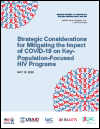
Resource | Publications,
This strategy is intended to support KP-focused HIV programs mitigate the impact of COVID-19. Developed for KP-focused HIV programs implemented or supported by FHI 360 in the Caribbean, Asia, and Africa, it may be used and adapted more broadly. Mitigation strategies refer to efforts to reduce exposure to and impact of COVID-19 on HIV program beneficiaries and staff and safely maintain HIV services within KP-focused HIV programs. Not included herein are strategies for responding to COVID-19 directly. This is a living document that will be updated frequently to reflect the rapidly changing context of COVID-19 and its impact on KP members, staff, and programs.
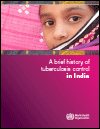
Resource | Publications,
This report was prepared as part of a World Health Organization (WHO) project funded by the Bill & Melinda Gates Foundation to review the history of tuberculosis (TB) control in India, to assess the impact of the TB programme on the epidemiology of tuberculosis in India, and to outline directions for future progress.
The challenge is now to sustain the existing DOTS-based programme while introducing all components of the new Stop TB strategy, including services to address TB/HIV, treatment for multidrug-resistant TB, strengthening laboratory services, and integrating TB services in all health facilities of both the public and private health-care sectors.
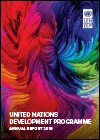
Resource | Publications,
Last year, through an intense period of UN reform, UNDP worked hard to support the people of 170 countries and territories around the world to get on their feet and stay there. We continued to push the boundaries of how we think, deliver, invest and manage as #NextGenUNDP to deliver on our Strategic Plan, establishing UNDP’s financial stability and taking steps to make the organization nimbler and more responsive. Today, as we support the UN System and help countries to prepare, respond, and recover in the face of COVID-19, our investments are proving their worth.

Resource | Publications,
Here is a look back at what we did in our region last year, as we sought to advance the Programme of Action stemming from the landmark 1994 International Conference on Population and Development, or ICPD - the revolutionary framework that marked its 25th anniversary in 2019, whose vision of rights and choices for all complements and contributes to the 2030 Agenda for Sustainable Development and its Sustainable Development Goals.
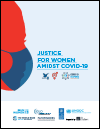
Resource | Publications,
This rapid assessment examines how the impacts of COVID-19 are threatening women’s ability to access justice. The assessment reflects challenges faced by women and girls of diverse backgrounds and socio-economic groups, including those experiencing overlapping disadvantages—for example, women on the front lines—and those facing amplified challenges in humanitarian settings. Cross-regional and local experiences are highlighted, and quantitative data is utilized where available. Past epidemics are informative—and sobering—in terms of risks for women and offer lessons about how to prevent and mitigate these risks.
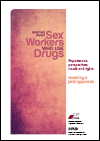
Resource | Publications,
Sex workers and people who use drugs are subject to widespread violations of their human rights, which, for the most part, go unchallenged. Globally, these groups are subjected to repressive and discriminatory laws, policies and practices. These policies and practices fuel stigma, discrimination, widespread violence, and significantly increase the risks and vulnerabilities of both populations to sexually transmitted infections and blood borne viruses, notably HIV and hepatitis B and C. In settings that have detrimental and punitive drug and sex work laws and policies, sex workers who use drugs experience interconnected layers of risk and vulnerability, caused by the compounded effects of criminalisation, stigma, and discrimination.
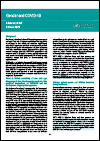
Resource | Publications,
Pandemics and outbreaks have differential impacts on women and men. From risk of exposure and biological susceptibility to infection to the social and economic implications, individuals’ experiences are likely to vary according to their biological and gender characteristics and their interaction with other social determinants. Because of this, global and national strategic plans for COVID-19 preparedness and response must be grounded in strong gender analysis and must ensure meaningful participation of affected groups, including women and girls, in decision-making and implementation.
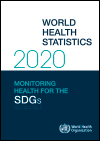
Resource | Publications,
The World Health Statistics 2020 summarizes recent trends in life expectancy and reports on progress towards the main health and health-related Sustainable Development Goals (SDGs) and associated targets. It also assesses the current availability of those data, and describes how WHO is supporting countries to improve health information systems and global health security. The 2020 edition also includes four indicators (relating to poliomyelitis, hypertension and obesity in adults and school age children) from the Thirteenth General Programme of Work 2019−2023 (GPW13).
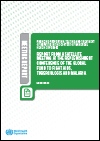
Financing Prevention, Testing and Treatment of Hepatitis in the Context of Universal Health Coverage
Resource | Publications,
A side event was held at the 2019 conference for the replenishment of the Global Fund to Fight AIDS, Tuberculosis and Malaria in October 2019 to consider the effective use of global health resources. The meeting underscored the potential public health impact of expanding viral hepatitis elimination programming through strategic integration, including integration with existing efforts to eliminate AIDS and TB.
Conclusions outlined in this report call for the integration of the viral hepatitis response within programmes funded by the Global Fund and other funding agencies under a broader logic of UHC, as well as the establishment of catalytic funding for setting up and implementing national hepatitis plans.
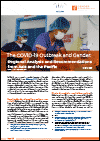
Resource | Publications,
The updated regional analysis presents evidence in the areas of unpaid care work, needs of women healthcare workers, gender-based violence, exploitation of women, girls, and at-risk groups, access to livelihoods, impact on women migrant workers, access to healthcare, exclusion from leadership roles, marginalization of women’s groups and networks, access to information, compounding impacts of secondary disasters, and equal access to shelter and to safe quarantine facilities. It presents recommendations for action to humanitarian leadership, to donors, and to governments for a more gender-responsive approach to COVID-19 response in the region.





